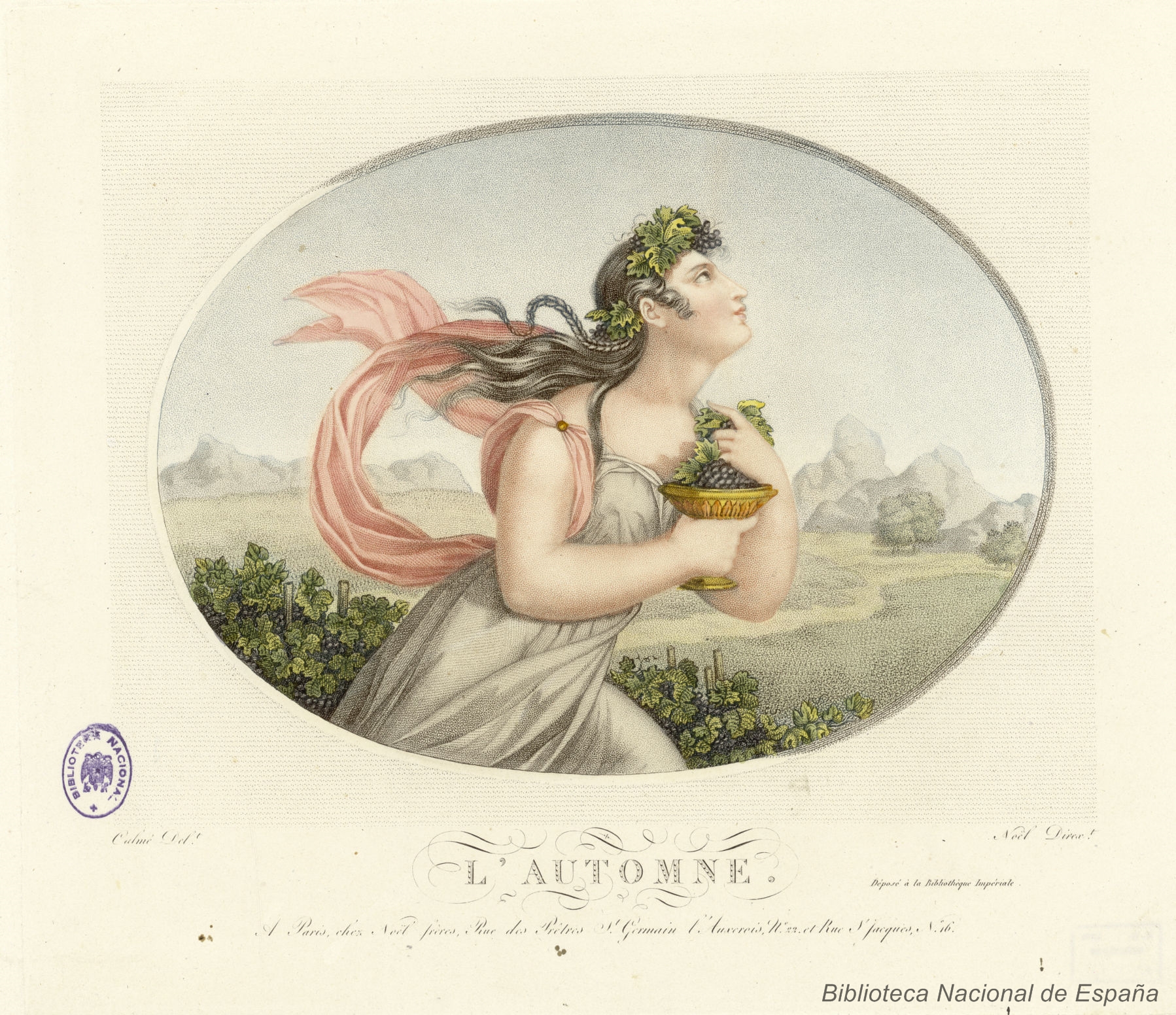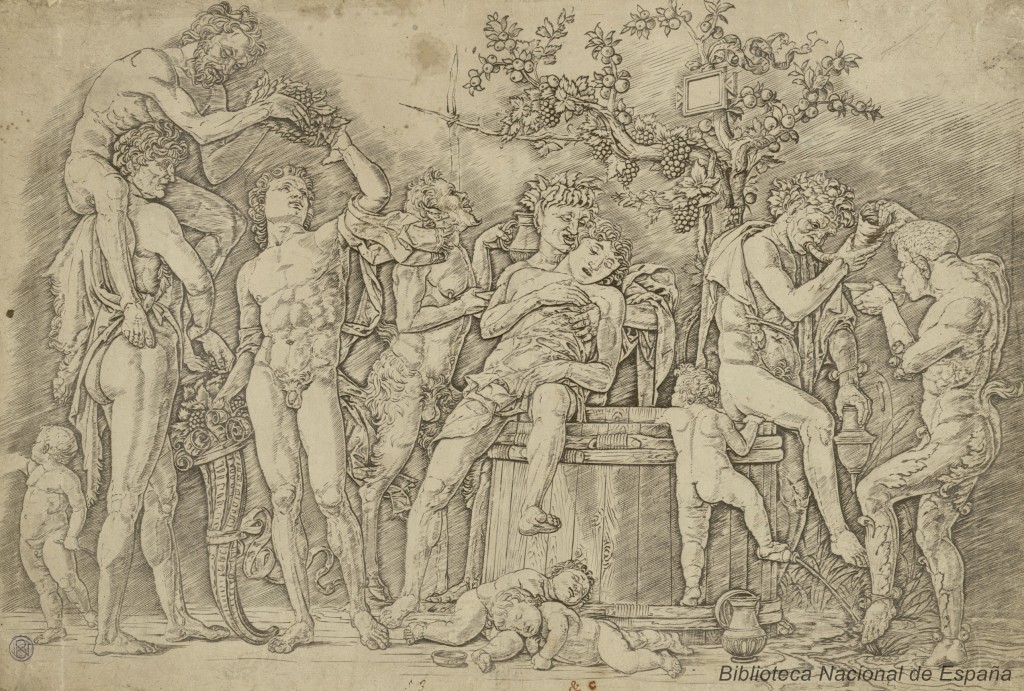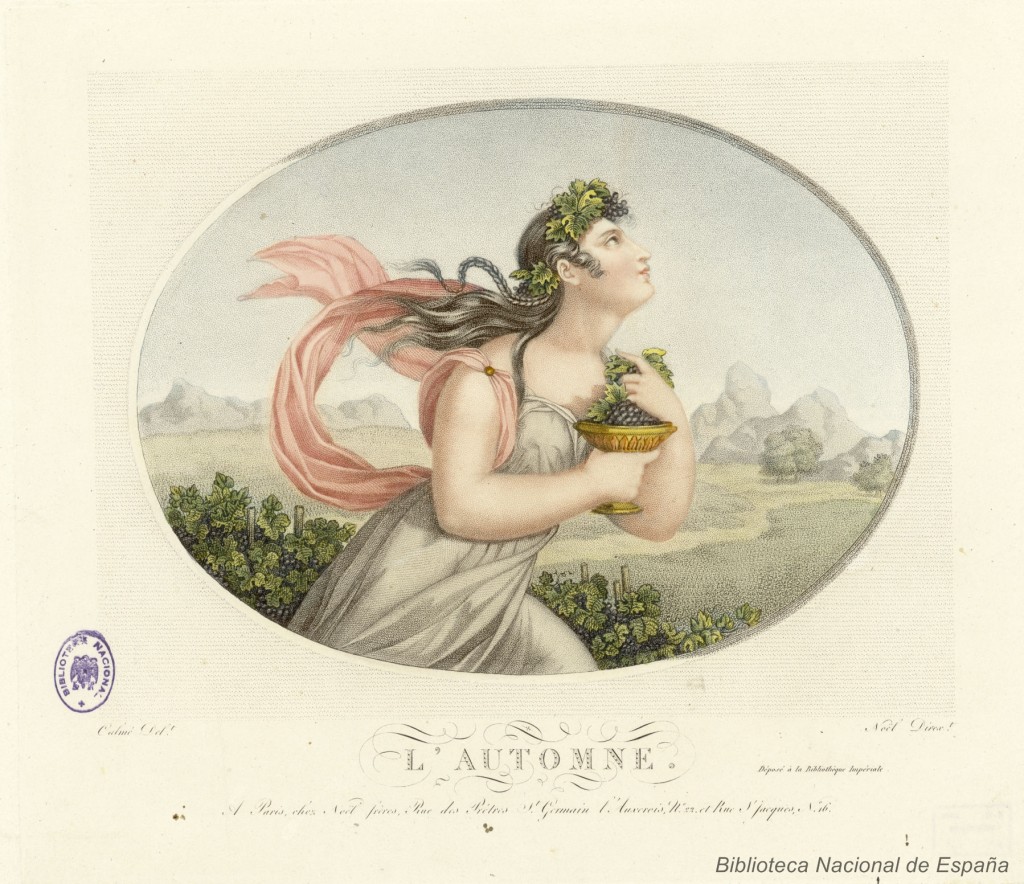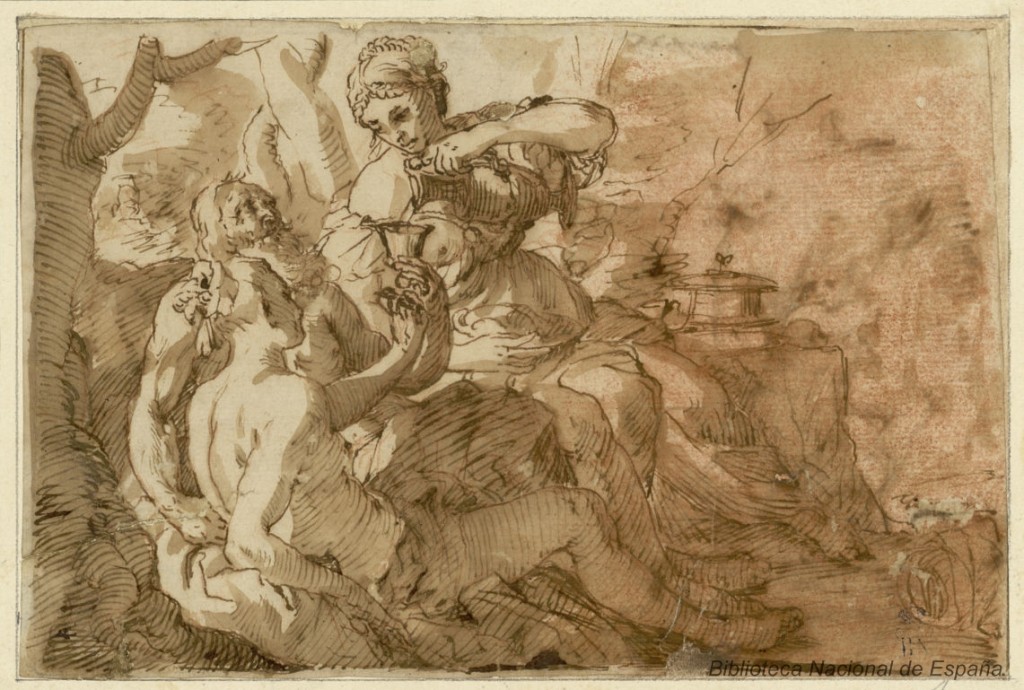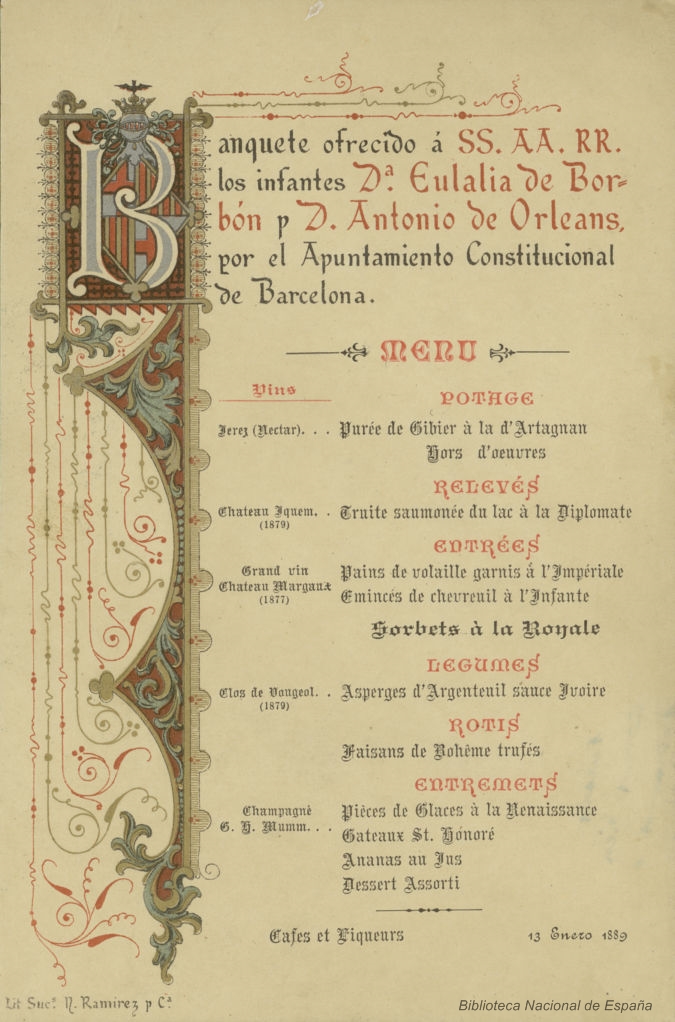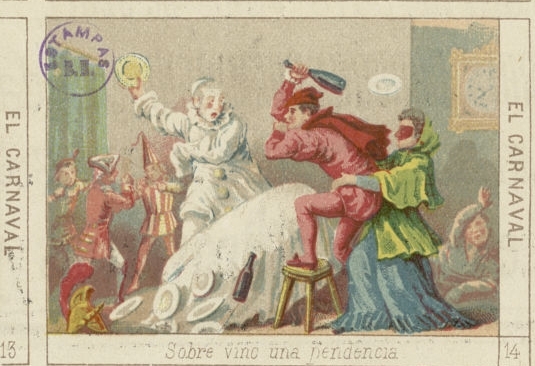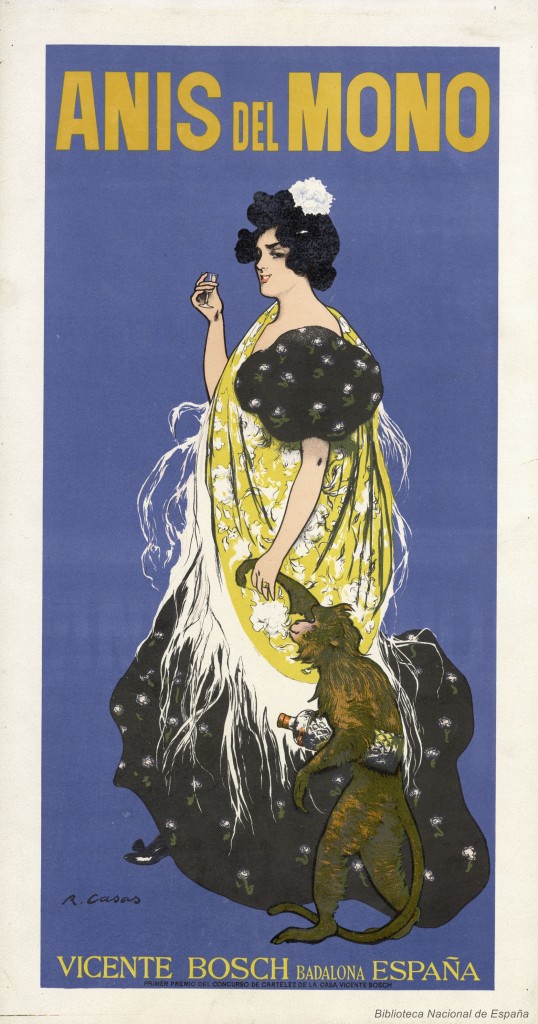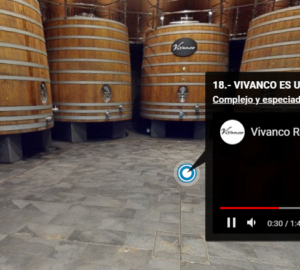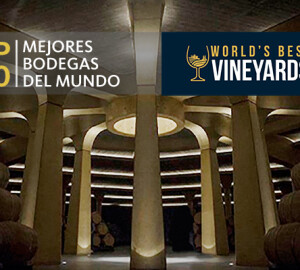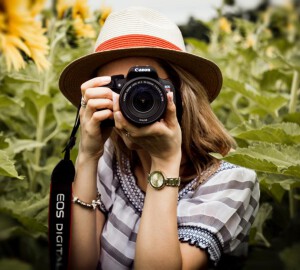Wine is a "human history".A universal drink that has accompanied Mediterranean cultures for 8 millennia and has transcended its character as a religious or celebratory symbol to become an icon, accompanying human sentiment, bringing man closer to the divinities, integrating him with nature, teaching him to care for the vine and how to process its fruit, and also being his ally both in the most euphoric moments and in the most desolate ones. Wine is linked to the history of mankind, it has witnessed a multitude of episodes from a wide range of perspectives and has travelled through the centuries, among other forms, as: engraving, exlibris, drawing, minute, ephemeral print and poster.
The Project
The National Library of Spain (BNE) and the Vivanco Foundation for the Culture of Wine began in 2014 a specific collaboration agreement to carry out a bibliographic-iconographic study on the culture of wine with the aim of locating, cataloguing, studying, digitising and disseminating the existing documentation in different collections of the BNE, predominantly graphic, related in some way to the "drink of the gods".
Since those beginnings, a large number of extremely beautiful and interesting examples have been discovered in the BNE's repositories, directly or indirectly connected with the "sacred nectar".They are connected directly or indirectly with wine, with Dionysian and Bacchic mythology, with wine and its symbolism in religion, with wine in art, in advertising, with the work of wine, its auxiliary industries, the service of wine, etc.
The Documents
Among the thousands of documents consulted and selected, the large number of engravings in the Fine Arts Service of the BNE whose iconography is related to wine are particularly noteworthy. There are works in which this drink and the grape harvest are shown as an allegory, as in the case of Autumnby Jan Saenredeman (17th century); those with purely plant motifs, such as Raisin Muscat Rouge by Benoit Chirat (19th century); still-life compositions with chalices, jugs and jugs, such as Cup with handle with snake body and faun's head (16th century) by Virgil Solis; or engravings illustrating literary scenes such as Don Quixote defeats the wine hides by Manuel Salvador Carmona (18th century), illustrating the reverie of Cervantes' character.
The gythological bacchanalsThe Dionysus and Bacchus, occupy an important part of this collection. There are many representations of the Greek Dionysus and the Roman Bacchus, as well as of their processions or bacchanals made up of other characters such as silenes, fauns, satyrs, bacchantes, etc. Such is the case, for example, of the Bacchanal with the vat by Andrea Mantegna (16th century).
The Old and New Testament passages that relate the symbolism of wine to the blood of Christ through transubstantiation are reflected in the scenes in the religious engravings, as in: The Last Supper (18th c.) by François Ragot, based on an original composition by Rubens, or The Marriage at Cana (16th c.), by Cort Cornelis, on an original composition by Lorenzo Sabatini.
In 17th-century art, it was very common to see the genre scenesIn 17th-century art, the reality of the time, human misery, poverty and drunkenness, sometimes portrayed in a grotesque manner, are very common. Here we can highlight Three Drinkers (Vivitur Parvo Bene), by Cornelis Visscher, according to an original composition by Adriaen van Ostadeboth authors specialising in this type of scene.
The greatest exponent of the satirical engraving is the 18th century British artist William Hogarth, whose most outstanding works include A midnight modern conversation, Beer Street o Gin Lane, for his realism and criticism of the devastating effects of alcohol on all strata of society.
Among the artists of the 20th century, we can highlight Picasso's particular vision of the Bacchanal of Picasso or the costumbrista scene, Drunken Pope of Ricardo Baroja.
Since 2008, the Foundation Vivanco for Wine Culture, in collaboration with the Escuela Superior de Diseño de La Rioja (ESDIR), has been supporting new creators in this artistic discipline and has been organising the annual International Prize for Engraving and Wine. The BNE holds and preserves some of the works submitted for these prizes whose theme revolves around wine and which are also included in this collection, such as: Essence of wine (2008), by David Rodríguez, top prize-winner in the 1st edition.
Another type of print found in the Fine Arts Service of the BNE with wine iconography are the Exlibris. These are small engravings often attached to the flyleaves or placed on the backs of the covers of books expressing ownership or belonging to a library, often belonging to a bibliophile. These delicate documents abound with subtle graphic elements related to wine, located in ornamental bands and borders, sometimes only visible with the aid of a magnifying glass: bunches of grapes protruding from cornucopias, vine leaves and utensils related to the serving and storage of wine, such as wine glasses, jugs, porrones, amphorae, kraters and even corkscrews.
Prior to the engraving there is always a drawing and among the most outstanding in this selection of works related to the culture of wine there is again a predominance of mythological works, the drawings dedicated to the god Bacchus and his processional cortege. Bacchanal by Luis Paret y Alcázar (1770) or Return of Bacchus from Indiaby Raymond La Fage (168-) are significant examples of this material. And also, as in the case of the engravings, the iconography linked to the symbolism of wine in the Christian religion can be seen in the lines of The SupperThe iconography linked to the symbolism of wine in the Christian religion is also reflected in the strokes of Lodovico Carraci (1575-1616) and in one of the most widely represented Old Testament passages in the history of art, Lot and his daughters(16th century).
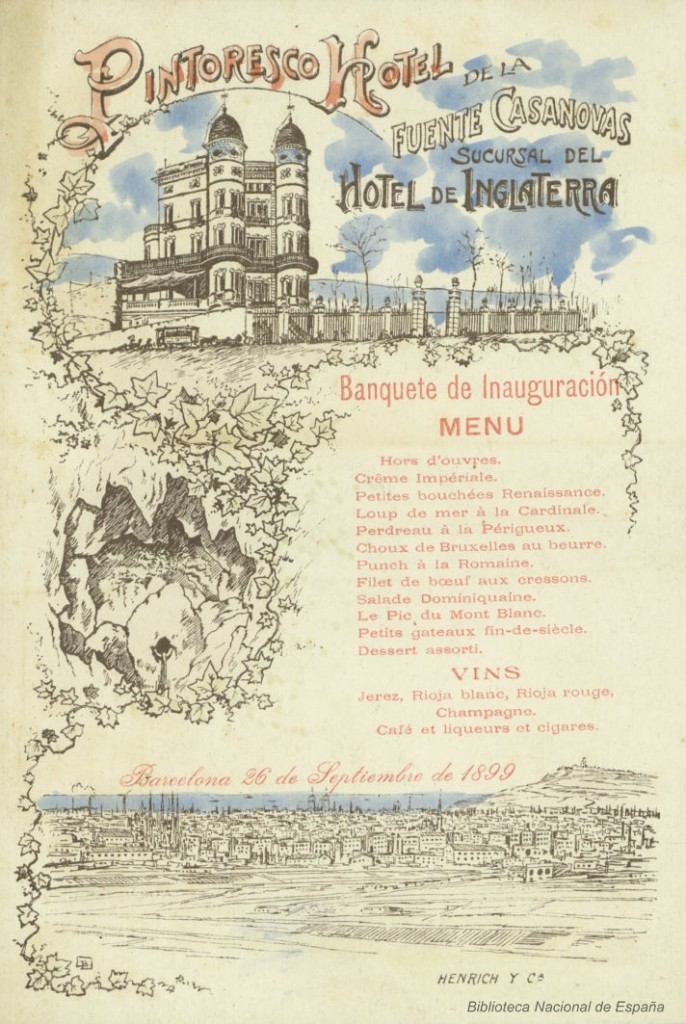
Also of great importance in this artistic-documentary collection are the minutes or restaurant menus. A novel and curious material that also provides a great deal of information on the gastronomic and oenological uses and customs of the society.
We have to go back to 1849 when the Duke of Brunswick adopted the custom of asking his servants to draw up the list of dishes and drinks offered at his banquets, a habit that quickly spread among Parisian nobles and which resulted in each diner having his own list of dishes so that he knew in advance what he was going to taste.
Most of the restaurant minutes that make up this set are Spanish, most of them from Madrid restaurants and many from Catalan Lhardy and many others from Catalan establishments, as well as from other parts of the world. Many of them are handwritten or printed in French because of the genesis of the minutes and because it was a sign of distinction for the establishment, especially in the early years of the 20th century.
The oldest minutes date from 1877. Among the reasons for celebration of the banquets are weddings; menus of shipping companies; minutes of royal banquets; banquets in homage to personalities of politics, art, great businessmen, etc.; menus of Christmas Eve, Christmas or New Year's Eve parties; menus of inauguration ceremonies and also price lists of drinks, among which, of course, Spanish wines are to be found.
The illustrations that decorate these minutes are usually related to the theme of the celebration event: heraldic motifs, coats of arms, logos of restaurants and hotels, some with advertisements for drinks of the time, etc. There are also blank ones, without a list of dishes, which were used as a template by the printers to offer as a sample to the restaurants.
In relation to the minutes, it could not be missing the one gastronomy made with such a precious liquid. Thus, from the end of the 19th century, there are reports of menus with dishes cooked with wine, such as: Filet of hare Burgundy style (1898), Sole in Cherbourg white wine sauce (1903), Truffled chicken with champagne (1898), Kidneys in sherry or the traditional Pears in wine (1920). Also dishes "paired with Spanish and French wines, including Rioja, Jerez and Catalan cavas.
The Ephemera (a collection of printed ephemera) deserves special mention due to the particular nature of its nature. Although they are documents "with no pretensions of surviving to the present day", the Fine Arts Service of the BNE has managed to gather, catalogue and conserve a magnificent collection related to the world of wine and its iconography. The typology of these documents is very varied. Of particular note are: pocket calendars and wall calendars, such as that of Tondonia Vineyard from the early 20th century; postcards advertising fortifying or restorative wines, such as the Aroud wine; advertising cards such as those of Aniseed of the Monkey or advertising cards, as well as the series of stickers Carnival from San Román Wines.
Other documents classified as ephemera and which are related to wine in terms of their purpose and iconographic elements are: Christmas greetings from various trades linked to the beverage, such as the following tavern keeper; reminders and devotional prints; cards and leaflets of products and commercial establishments, such as those of wineries; labels The cards and leaflets for beverages, mostly wines, but also for sweets, fruit, preserves and hotels; cigarette labels and cigarette labels, paipais advertising and many other small documents.
In addition to the Ephemera, The advertising of wines, wineries and all the elements and events that have to do with this drink to which we are paying tribute, complement the postersThe wine poster, an advertising document par excellence that is not missing in this selection. We all have in mind the advertising posters of the main brands of wines, cognacs, brandies and distillates produced in Spain. These posters enter the BNE mainly through the Legal Deposit although there are also some from earlier dates, such as the one from Bugeaud winewhich dates from 1887, the winning poster in the competition of Anis del Mono signed by the modernist Ramón Casas in 1910, and the poster for the Lúmen Champagne of Bodegas Bilbaínas de Haro, in La Rioja.
However, among the posters, it is preferable to highlight another typology from an iconographic and ethnographic point of view. These are the Grape Harvest and Wine Fairs and Festivals which have been held in various Spanish towns and villages since the middle of the last century, with the most notable being that of Requena which holds the title of being the first Grape Harvest Festival since 1948. Also noteworthy are the festivals of Jerez, Villanueva del Ariscal, Rioja and many other localities that join in the celebration of the grape harvest and the celebration of a good harvest.
And as in a selected grape harvestThe aim of this project is to collect the best examples, creating an artistic-documentary collection linked to this excellent drink and to make it accessible to all those interested. The next day 12 April the web site will be presented and made public Wine culturewill be presented and made public on the next day, which brings together the results of this collaborative project between the Foundation Vivanco and the BNE in order to "giving back to wine what wine has given us".
Diana Fraguas Ruiz
Foundation Documentalist Vivanco






